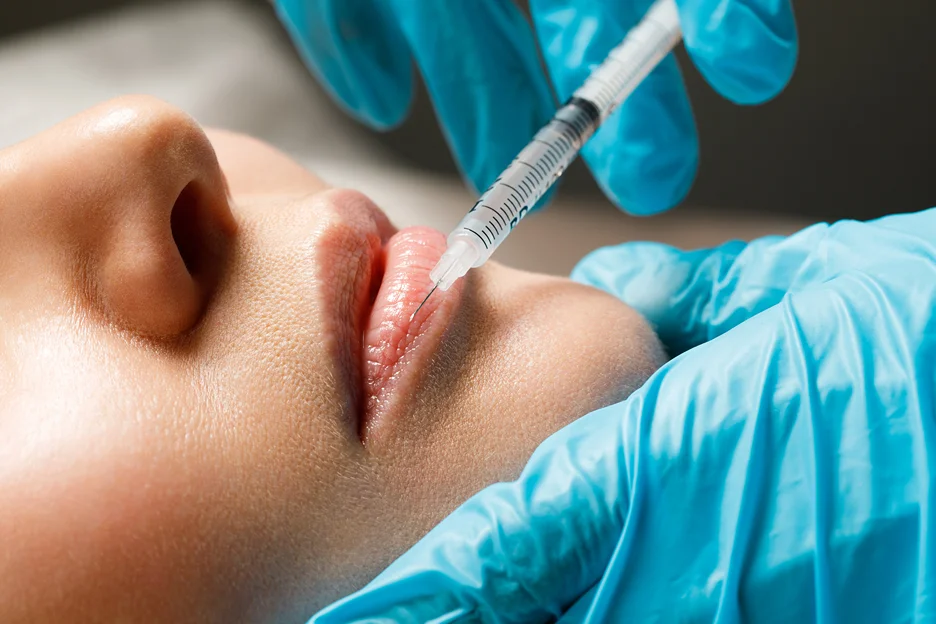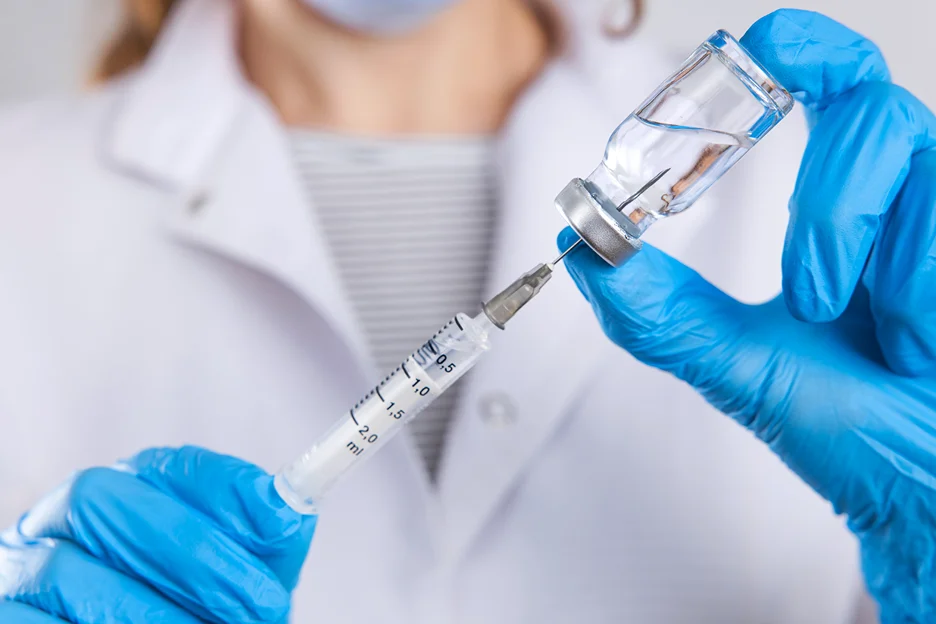Lip filler migration occurs when the injected filler moves away from the intended area, resulting in lumps, bumps, or an uneven appearance outside the lip borders.
Common migration areas include the nasolabial folds and above the upper lip, known as a “filler mustache.”
Why Does Lip Filler Migration Happen?
Lip filler migration happens when injected filler moves from the intended area, causing lumps or an uneven appearance.
It can be caused by poor injection technique, the wrong filler, or too much filler volume. Symptoms include bumps along the lip borders, an asymmetrical shape, or a “filler mustache.”
Solutions involve massaging, dissolving migrated filler, or letting it resolve over time
Causes of Lip Filler Migration

Several potential causes of lip filler migration:
- Poor injection technique
- Using the wrong filler for lip augmentation
- Injecting too much filler into the lips
- Lack of proper massage after injection to distribute the filler
- Failure to follow aftercare instructions, like avoiding strenuous exercise
Symptoms of Lip Filler Migration
If your lip filler has migrated, you may notice:
- Lumps or bumps along the lip borders or nasolabial folds
- An uneven or asymmetrical lip shape
- A “filler mustache” effect with filler bulging above the upper lip
- A general change from the smooth, plump lip look you wanted
Can Lip Fillers Migrate Below the Lip?
Yes, lip fillers can migrate below the lip if the filler spreads from the intended injection site. This unintended spread can be due to poor injection techniques, the type of filler used, and the injector’s experience. Choose a skilled injector to minimize the risk of migration and to ensure correct placement.
How Can I Tell if My Lip Filler Has Migrated?
Lip filler migration is when the filler moves from the original injection site to surrounding areas. Signs of migration include a lack of definition in the lip borders, puffiness above the upper lip near the vermillion border, or rolled or ‘ledge’ lips. The area may feel ‘squishy’ or plump when touched.
What Happens to Lip Filler Over Time?
Over time, non-permanent lip fillers like Restylane Silk or Juvederm break down and are absorbed by the body, causing the lips to gradually decrease in fullness and return to their original shape. The filler’s longevity varies, with an average duration of six to nine months, which can be shorter due to lip mobility.
Preventing Lip Filler Migration

Prevent migration by getting lip fillers from an experienced, qualified provider. Research, view before/after photos, and discuss your desired results. Follow pre- and post-treatment instructions. Avoid massaging the area, strenuous exercise, or anything that increases blood flow.
Choosing the Right Lip Filler
The type of dermal filler used for lip augmentation can impact migration risk. Hyaluronic acid-based fillers are most commonly used for the lips. Some are designed specifically for lip volume and have a thicker consistency.
Your injector considers the filler’s firmness and longevity when selecting the right product for your treatment goals. Using an inappropriate filler for the lips increases the chances it could shift.
Proper Injection Technique
Even with the right filler, injecting it into the wrong plane or depth can lead to migration. Experienced injectors know the specific lip anatomy and how to deposit filler into the correct planes for the desired shape and fullness.
After injection, they’ll likely massage the area for even filler distribution. Overfilling beyond the recommended volumes is a risk for migration. Following your injector’s guidance on filler amounts is crucial.
Treating Lip Filler Migration
If lip filler migration occurs, there are options for correcting it. Your injector may massage the area to redistribute the filler or use hyaluronidase to break down and dissolve the filler. In some cases, the migrated filler may self-resolve over time.
It’s best to see a qualified provider experienced in treating migration complications. Don’t attempt to massage or dissolve migrated filler on your own, as improper technique could worsen the situation.
Recovery and Aftercare
If you need treatment for migrated lip filler, expect a recovery period. There may be swelling, bruising, or redness in the treatment area which should subside within a week or two.
Your provider will give you specific aftercare instructions for a safe recovery. This may include avoiding certain activities, applying cold compresses, and watching for signs of infection or excess swelling.
Depending on the migration extent, you may need follow-up or multiple treatments to fully correct it. Severe cases can leave permanent dents or irregularities in the lip area even after filler dissolution.
Does Lip Filler Migration Go Away?
Lip filler migration isn’t permanent. It can resolve over time as the body breaks down the filler. The duration depends on factors like the filler type and injection time, typically lasting 6 to 18 months. However, if the migration is due to improper administration, it may not resolve without intervention.
How Do You Fix Lip Filler Migration?
To correct lip filler migration, the most effective method is to use hyaluronidase, an enzyme that dissolves the filler over a few days.
After the filler has been dissolved, usually within two weeks, patients can undergo a new lip filler treatment if desired. It is crucial to seek treatment from an experienced and credentialed provider to ensure proper technique and address complications like pain, swelling, or discoloration.
How Quickly Can Lip Filler Migrate?
Lip filler migration can occur at varying speeds depending on the volume injected and other factors. It can happen as soon as 4-6 weeks after overfilling or may appear months later if the migration is gradual.
Can You Reverse Lip Filler Migration?
Yes, lip filler migration can be reversed by injecting an enzyme called hyaluronidase, which dissolves the filler over a few days. After the filler is dissolved, you can choose to have the lip filler redone.
Does Migrated Filler Break Down?
Migrated filler breaks down over time, usually within 6-18 months. Older and migrated fillers may break down faster when treated with hyaluronidase.
Does Massaging Lip Filler Cause Migration?
Massaging lip filler right after injection can cause migration, especially if done incorrectly or excessively. Follow the aftercare instructions provided by your injector to minimize the risk.
Conclusion

Lip filler migration is a potential complication of dermal filler injections that can create an uneven appearance. It’s preventable by selecting an experienced injector, following pre- and post-treatment protocols, and managing expectations.
Migration can be corrected, but it’s an inconvenient and costly issue best avoided. Research, understand the risks, and have an open conversation with your provider. With the right injector and technique, you can minimize lip filler migration.


